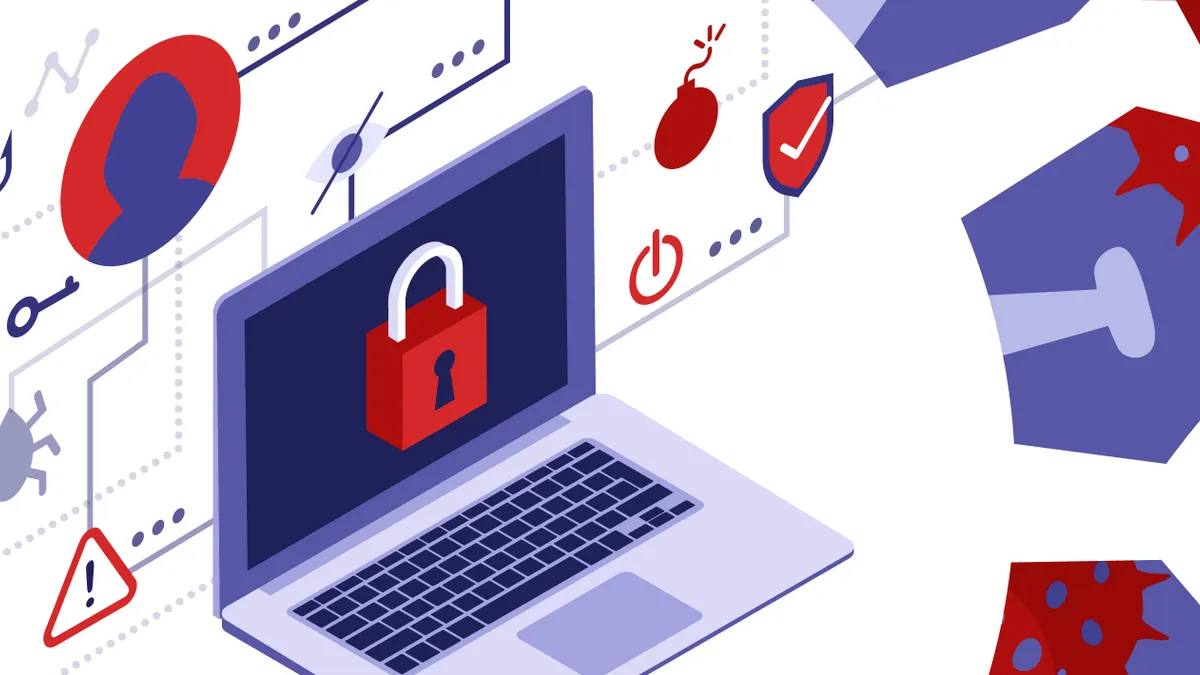This is a contributed op-ed written by Gina Govojdean, Metal Flow Path Manager at Howmet Aerospace. Opinions are the author's own.
COVID-19 has ravished supply chains, testing agility of even the most mature commodity distribution paths. Strain on input resources, labor and transportation create an environment where supply chain fraud can thrive — fueled by increased vulnerability of procurement resources and consumers.
There can be a direct correlation in the geographic path a supply chain spans and its vulnerabilities — every additional port or forwarder that acts as a link in a supply chain serves as an opportunity for additional fraud.
Agility is important for survival, now more than ever, but agility without risk management will not be enough.
Steps to take for sourcing
Start by questioning if an organization's most critical supply chains are organic or planned. Are there risk-based controls and fraud mitigation built in?
An organic supply chain, where an organization is moving goods from a source without putting much thought or controls in place, will be particularly vulnerable to fraud. And these weaknesses are further extorted by the stresses of a crisis.
Do not fall prey to pitfalls created by resource scarcity. Panic and strategic sourcing do not mix well and should be combated by fraud-mitigation procurement practices, transportation sourcing vigilance, supplier payment fraud controls and a continuous improvement fraud control strategy.
Do not fall prey to pitfalls created by resource scarcity.

At the beginning stages of the pandemic, face masks, hand sanitizer and disinfecting cleaners vanished with quick consumption that outpaced available supply, creating a market shortage and driving prices up. This basic supply and demand economics play created a prime environment for fraudsters offering substitute goods to emerge. Goods were offered at exorbitant prices and alternative products that were not fungible substitutes appeared on the market.
Pause and ask questions if something seems uncertain. Do a quick search of the "supplier" offering scarce goods. Did this supplier exist a month ago, or did they only recently emerge to conveniently meet a need? If a product seems too good to be true, it may likely be a fraudulent substitute that will not meet specifications.
While it might be tempting to buy a large volume of a scarce product, avoiding this trap is important in deterring fraud attempts. Splitting up deliveries or requesting sample products are a normal component of good sourcing practices and become even more important in instances of supply shortages.
If a procurement professional requests a sample and never receives one, there is a good chance the actual product isn't real. As a best practice, order a small quantity of an item from a new supplier as a trial. This could prevent your organization from receiving a large quantity of items that do not meet the need. Risk is minimized by ordering smaller quantities.
Frequently analyze and safeguard shipping practices
Simultaneous shortages of goods and increases in demand for shipping services changed purchasing behaviors and have been a catalyst to new fraud patterns where shipping fraud can thrive.
Fraudsters can steal user information, impersonate account owners, and in turn redirect the shipment of goods. Comparable to the geographical reach of global supply chains giving rise to increased risk, shipments and deliveries involve many touchpoints, directly creating more opportunity for shipping scammers to strike.
Organizing shipping arrangements may be a routine task for many supply chain professionals, however, it is critical to remain vigilant even in instances that seem straightforward. Keep in mind that routine transactions have the greatest opportunity for scammers to observe and replicate. Fraud prevention controls should be equally strong for routine practices.
Organizations should keep shipping details such as account numbers confidential. Additionally, an evaluation of billing details for shipments should be subject to frequent internal review. Early detection of any irregular activity is essential to preventing big losses.
Educate your workforce and strategy
Emails are a primary form of communication, and many professionals receive hundreds a day without time to thoroughly examine each. The smartest companies have implemented robust cybersecurity programs and conduct regular employee trainings to mitigate fraud.
But even the most advanced fraud-prevention program is vulnerable.
Accounts payable personnel are on the front lines against fraudsters, making employee education important. It is also critical to have strict controls in place for changing supplier banking details.
A simple solution is to reach out to supplier contacts directly and confirm any requests for banking changes verbally to verify legitimacy. Even emails that appear legitimate can be a sham. Pause and examine closely any request related to significant changes in supplier address, banking information or payment practices.
Educating employees on common pitfalls and capturing fraud attempts as a learning opportunity is the key to minimizing supply chain fraud vulnerability.

Even an organization with advanced risk mitigation controls may experience fraud attempts, and these trends are likely to continue in a post-pandemic environment. It is important to learn from these occurrences and share best practices across an organization to educate employees on fraud avoidance.
Procurement organizations may need to better understand and activate alternative sources of supply to ensure supply chain agility. Updating inventory policies, enhancing focus on workforce staffing and labor flexibility, analyzing alternative outbound logistics options or securing additional capacity, and offerring training on supplier payment control practices and banking verification are all possible options.
A post-pandemic world will look different, but with these transformations, fraudsters will evolve. Exposing supply chain weaknesses and working to strengthen gaps will allow organizations to best prepare for a global economy rebound.
The coronavirus pandemic will not likely be the last test of supply chain agility. Educating employees on common pitfalls and capturing fraud attempts as a learning opportunity is the key to minimizing supply chain fraud vulnerability.
This story was first published in our weekly newsletter, Supply Chain Dive: Procurement. Sign up here.





















